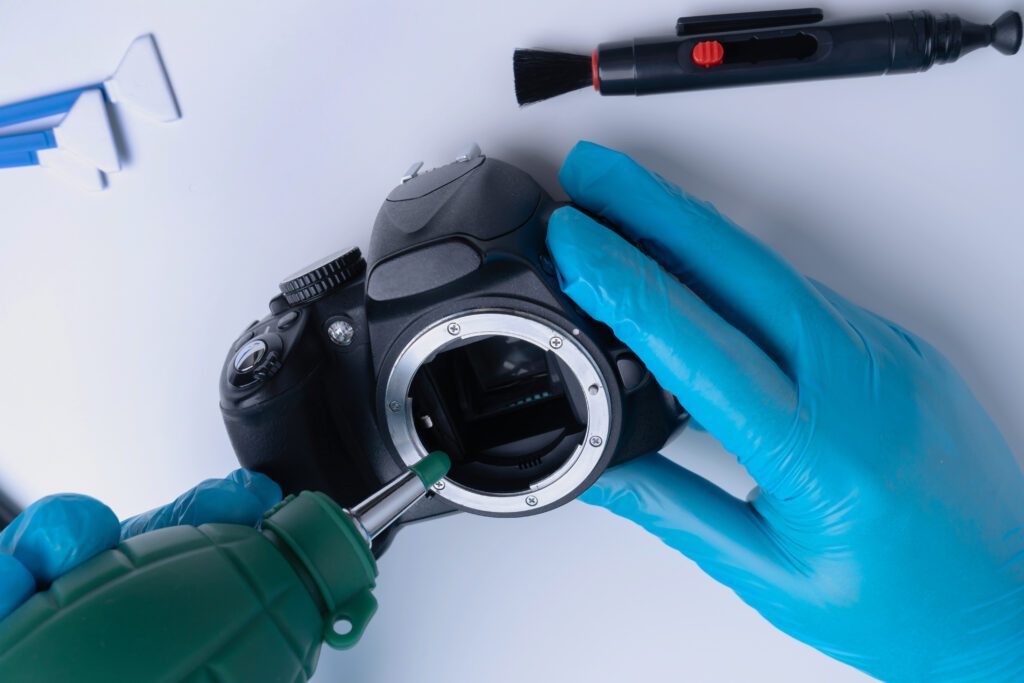Digital Camera Repair- Any Gadget Repair
As you can see, digital cameras have no parts that are easily replaced by the consumer. However, you can open it up to clean it or dry it if necessary.
What mechanical problems can occur with your digital camera?
The camera may refuse to turn on or off. The image quality may be poor, the camera can use batteries too quickly, the camera may not connect with a computer, the flash may not work, the camera may not take pictures, or the screen may keep turning off. This Any Gadget Repair on digital camera repair tells how a digital camera works, what often goes wrong, and how to identify the problem.

What Do I Need for Digital Camera Repair?
Don’t try to take your digital camera apart! Follow the directions in the owner’s manual on replacing batteries and on cleaning and troubleshooting your camera, but don’t go beyond that. If it doesn’t work, maybe it’s under warranty and you don’t want to do anything to void that warranty. If not, hire a professional camera repair service with digital camera experience.
What Are the Steps to Digital Camera Repair?
Know your camera. Perform regular maintenance on it as needed (clean the lens, keep fresh batteries in it). Keep your camera away from adverse environments (hot, cold, or wet places). Other than that, take it to a professional for service.
it). Keep your camera away from adverse environments (hot, cold, or wet places). Other
than that, take it to a professional for service.
What Are the Steps to Digital Camera Repair?
Know your camera. Perform regular maintenance on it as needed (clean the lens, keep fresh batteries in it). Keep your camera away from adverse environments (hot, cold, or wet places). Other than that, take it to a professional for service.
How Can I Identify a Digital Camera Problem?
- Again, you can identify and resolve many of the problems with digital cameras by referring to the owner’s manual. It may include instructions on running self-diagnostics; newer cameras are very smart. Here are some general tips.
- If the image quality is poor, check the lens to make sure it’s clean. See your digital camera owner’s manual for instructions.
- If the digital camera won’t turn on, check the batteries, or connect the camera to an AC adapter. If that doesn’t work, remove all batteries, disconnect the AC adapter, wait a minute, reinsert batteries and reconnect the adapter.
- If the flash doesn’t work, the camera won’t take pictures, or the screen keeps turning off, check that the batteries are strong.
- If the camera got wet, turn off the camera and remove all batteries and storage media. Let the camera dry completely for at least 24 hours before reinstalling the batteries and media. A can of compressed air will help dry it out more quickly.
- If the digital camera uses batteries too quickly, use the viewfinder more and the LCD less. You also can replace the batteries with heavy-duty batteries suited to digital cameras (the ones that came with the camera probably are barely adequate). Use the power adapter whenever downloading images to a computer. You also can reduce battery drain by using a card reader (there may be one in your computer) to transfer images to the computer.
- If the camera won’t connect with your computer, make sure you have the latest version of the needed software drivers (in your digital camera package or online from the manufacturer). Check your computer for conflicts (two devices trying to use the same port); you may need technical assistance for this one. In some cases you can get things working again by connecting the digital camera, then turning off the computer and turning it back on.


